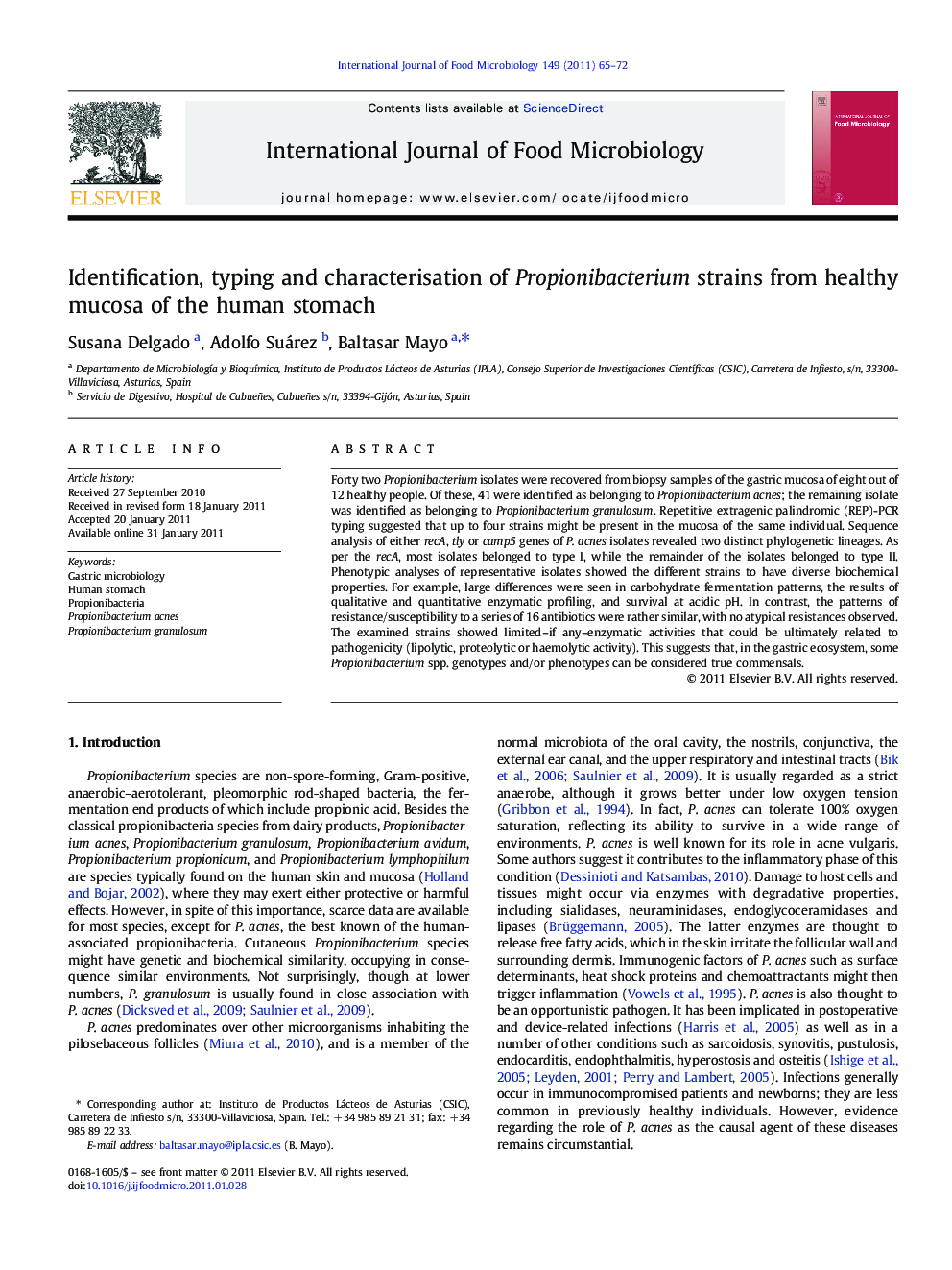| کد مقاله | کد نشریه | سال انتشار | مقاله انگلیسی | نسخه تمام متن |
|---|---|---|---|---|
| 4367906 | 1616663 | 2011 | 8 صفحه PDF | دانلود رایگان |

Forty two Propionibacterium isolates were recovered from biopsy samples of the gastric mucosa of eight out of 12 healthy people. Of these, 41 were identified as belonging to Propionibacterium acnes; the remaining isolate was identified as belonging to Propionibacterium granulosum. Repetitive extragenic palindromic (REP)-PCR typing suggested that up to four strains might be present in the mucosa of the same individual. Sequence analysis of either recA, tly or camp5 genes of P. acnes isolates revealed two distinct phylogenetic lineages. As per the recA, most isolates belonged to type I, while the remainder of the isolates belonged to type II. Phenotypic analyses of representative isolates showed the different strains to have diverse biochemical properties. For example, large differences were seen in carbohydrate fermentation patterns, the results of qualitative and quantitative enzymatic profiling, and survival at acidic pH. In contrast, the patterns of resistance/susceptibility to a series of 16 antibiotics were rather similar, with no atypical resistances observed. The examined strains showed limited–if any–enzymatic activities that could be ultimately related to pathogenicity (lipolytic, proteolytic or haemolytic activity). This suggests that, in the gastric ecosystem, some Propionibacterium spp. genotypes and/or phenotypes can be considered true commensals.
Research Highlights
► A set of Propionibacterium strains were recovered from healthy human gastric mucosa.
► Up to four different strains were found in samples from the same individual.
► Strains showed wide phenotypic and genotypic diversity.
► Strains were genetically similar to pathogens but pathogenic traits were not found.
► Commensal and beneficial strains could be used as probiotics.
Journal: International Journal of Food Microbiology - Volume 149, Issue 1, 1 September 2011, Pages 65–72